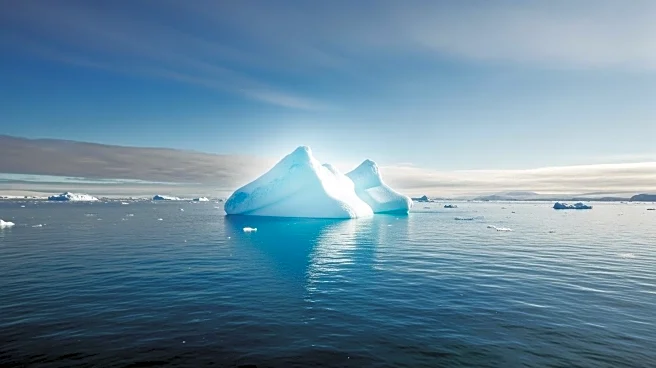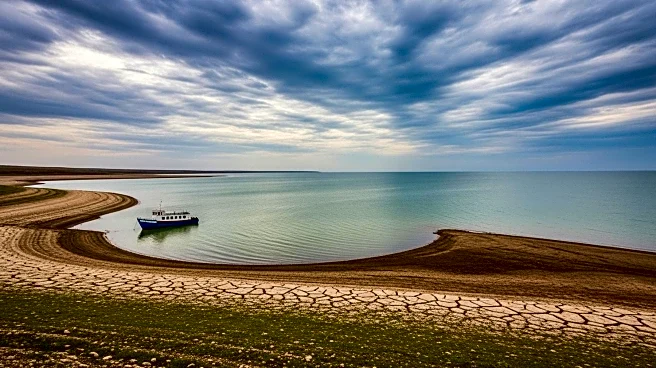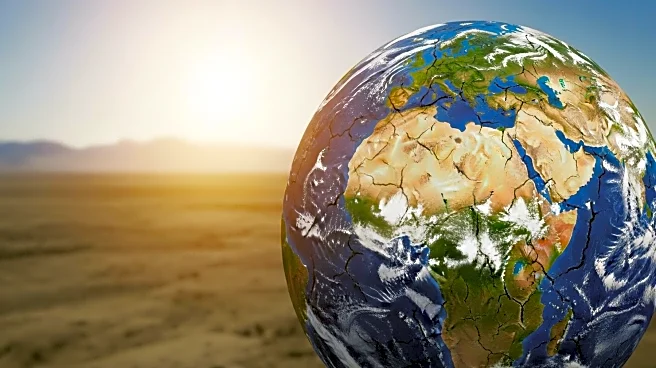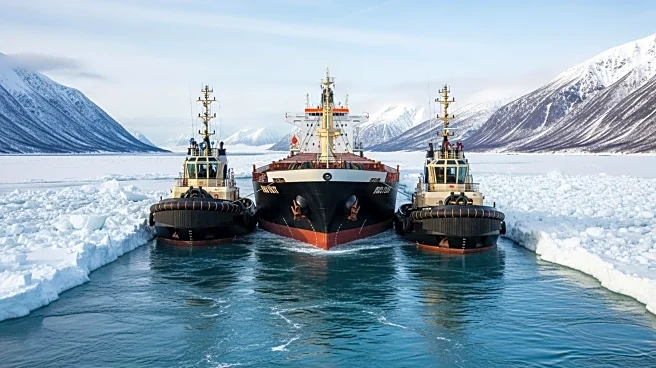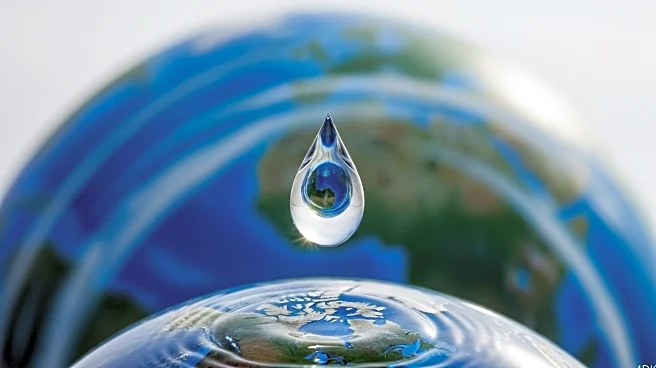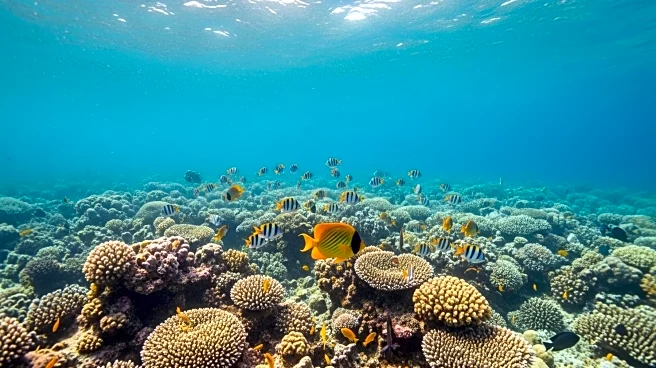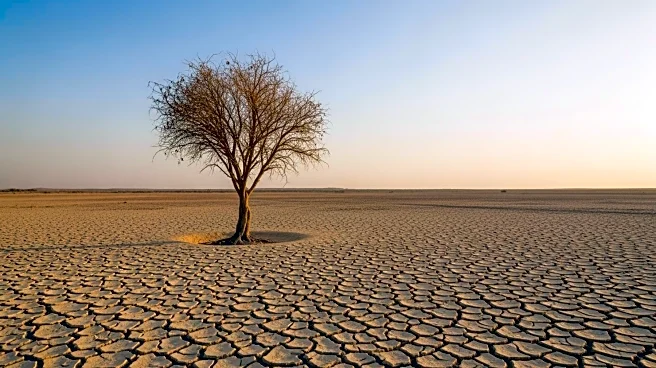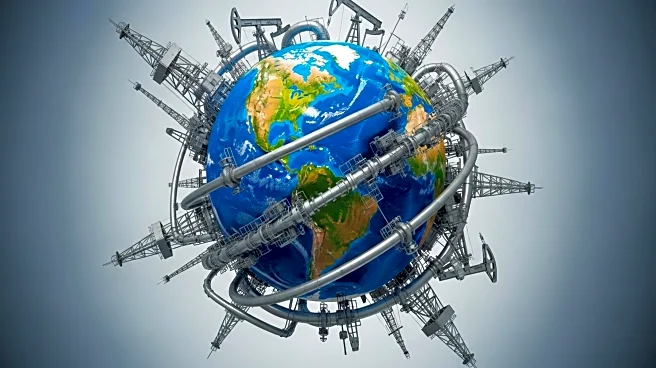What is the story about?
What's Happening?
The Caspian Sea, the world's largest enclosed inland body of water, is experiencing a dramatic decline in water levels, reaching a record low of -29 meters. This trend, primarily driven by climate change and increased evaporation, poses significant ecological and geopolitical challenges. Satellite data from ESA and NASA indicate a loss of up to 30 centimeters per year since 2020, a rate three times higher than previously observed. The decline threatens local ecosystems, including migratory birds and the endangered Caspian seal, and impacts regional economies and trade routes.
Why It's Important?
The shrinking Caspian Sea has profound implications for the surrounding nations, affecting trade, energy security, and environmental stability. As water levels drop, port facilities and trade routes face disruptions, leading to increased freight costs and infrastructure challenges. The situation highlights the urgent need for coordinated action among bordering countries to address the crisis. The Caspian's decline serves as a warning for other inland water systems globally, emphasizing the need for sustainable environmental policies.
What's Next?
Researchers call for immediate action to mitigate the effects of climate change on the Caspian Sea. This includes reducing emissions and implementing conservation strategies to preserve the sea's ecological and economic functions. The bordering countries must collaborate to develop adaptive infrastructure and policies to manage the crisis effectively.
Beyond the Headlines
The Caspian Sea's decline underscores the interconnectedness of environmental and geopolitical issues. As climate change continues to impact global water systems, the need for international cooperation and innovative solutions becomes increasingly critical.
AI Generated Content
Do you find this article useful?


